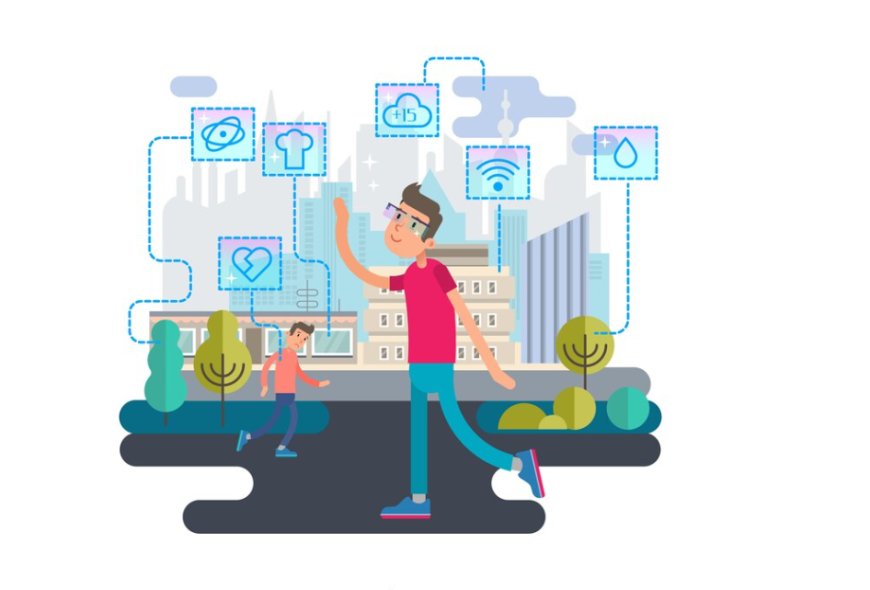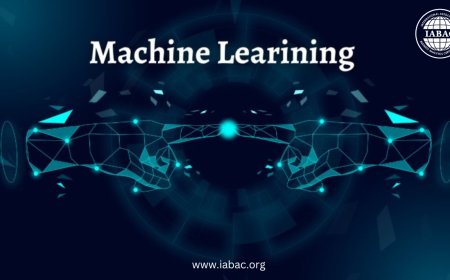Exploring the Real-World Applications of Reinforcement Learning
Explore real-world applications, from autonomous systems to finance, as we delve into the fascinating realm where AI learns through trial and error.

In the realm of artificial intelligence, Reinforcement Learning (RL) has emerged as a powerful paradigm that enables machines to learn and make decisions through interactions with their environment. Unlike traditional supervised learning, where a model is trained on labeled data, RL is based on the concept of trial and error. As an agent interacts with an environment, it receives feedback in the form of rewards or penalties, allowing it to learn optimal strategies over time. This dynamic approach to learning has found remarkable applications in various real-world scenarios, revolutionizing industries and solving complex problems.
Robotics and Automation
In the realm of Robotics and Automation, the integration of Reinforcement Learning (RL) has ushered in a new era of intelligent machines capable of learning and adapting to their environments. Unlike traditional robotic systems programmed with fixed instructions, RL empowers robots to learn by interacting with the real world. In this context, robots equipped with RL algorithms become dynamic agents, honing their skills through trial and error. This capability is particularly transformative in industries such as manufacturing, where precision and adaptability are paramount.
In manufacturing settings, RL enables robots to optimize their movements, enhancing efficiency and productivity. Robots can learn to perform intricate tasks, such as assembly or quality control, by receiving feedback in the form of rewards or penalties. This iterative learning process allows robots to refine their actions over time, improving their overall performance and adaptability to changing production environments.
Moreover, RL is instrumental in autonomous navigation for robots. Robots equipped with RL algorithms can learn to navigate complex spaces, avoiding obstacles and optimizing their paths. This is crucial not only in manufacturing but also in logistics, where robots are tasked with moving goods efficiently within warehouses or distribution centers.
The marriage of robotics and RL also extends to applications beyond the factory floor. In healthcare, robots can be trained to assist in surgeries or perform delicate medical procedures with a level of precision that surpasses traditional programming methods. Additionally, RL-equipped robots can be employed in hazardous environments, such as disaster-stricken areas or sites with potential safety risks, where their ability to adapt to unforeseen circumstances is invaluable.
Finance and Trading
In the dynamic and fast-paced world of finance, where milliseconds can make the difference between profit and loss, Reinforcement Learning (RL) has emerged as a game-changing technology. Finance and trading involve complex decision-making processes, and traditional rule-based systems often struggle to adapt to the ever-changing market conditions. RL, however, offers a dynamic approach that allows algorithms to learn and optimize trading strategies based on interactions with historical and real-time market data.
One key application of RL in finance is algorithmic trading. Traders leverage RL algorithms to develop automated trading systems that can analyze vast amounts of historical market data to identify patterns and trends. Unlike traditional strategies that rely on fixed rules, RL algorithms can adapt to shifting market conditions. They learn from both successes and failures, continuously refining their strategies to improve performance.
Portfolio management is another area where RL is making a significant impact. By optimizing the allocation of assets in a portfolio, RL algorithms aim to maximize returns while managing risks. These algorithms can adapt to changes in market dynamics and economic conditions, making them invaluable for investors seeking to achieve a balance between risk and reward.
Risk assessment is a critical aspect of financial decision-making, and RL models excel in this domain. These models can learn to assess and manage risk by simulating various market scenarios and understanding the potential consequences of different actions. This adaptive risk management approach is essential in minimizing losses and ensuring the stability of financial portfolios.
Healthcare
In healthcare, Reinforcement Learning (RL) is a groundbreaking approach that leverages machine learning algorithms to enhance patient care and streamline various aspects of the healthcare system. RL plays a vital role in personalized medicine by analyzing patient data to recommend tailored treatment plans, taking into account individual health histories and genetic factors. Moreover, RL is instrumental in drug discovery, where it accelerates the identification of potential therapeutic compounds by simulating and optimizing molecular structures.
This technology aids in the development of more effective and targeted medications. Additionally, RL contributes to healthcare operations by optimizing resource allocation, improving scheduling, and enhancing overall efficiency in hospital management. Its adaptive nature makes it a valuable tool for navigating the complexities of the healthcare landscape, ultimately leading to better patient outcomes and more sustainable healthcare practices.
Autonomous Vehicles
Autonomous vehicles, commonly known as self-driving cars, are a revolutionary application of advanced technologies, particularly artificial intelligence and robotics, in the automotive industry. Unlike traditional vehicles, autonomous vehicles have the ability to navigate and operate without human intervention. They employ a combination of sensors, cameras, lidar, radar, and sophisticated algorithms, including machine learning and reinforcement learning, to perceive their surroundings, make real-time decisions, and control their movements. The goal is to enhance road safety, increase transportation efficiency, and provide a more convenient and accessible mode of travel. The development of autonomous vehicles involves overcoming complex challenges, including regulatory, ethical, and technical considerations, to ensure a seamless integration of this transformative technology into our everyday lives. As the technology progresses, autonomous vehicles hold the promise of reshaping transportation, reducing accidents, and redefining the future of mobility.
Marketing and Recommendation Systems
In the digital age, where consumers are inundated with a plethora of choices, effective marketing strategies, and personalized recommendations have become paramount for businesses seeking to engage and retain customers. Enter Reinforcement Learning (RL), a sophisticated approach that has reshaped the landscape of marketing and recommendation systems.
At its core, RL in marketing involves the use of algorithms that learn and adapt based on user interactions and feedback. One of the prominent applications is seen in recommendation systems employed by platforms like Netflix, Amazon, and Spotify. These systems utilize RL to understand user preferences by analyzing their viewing or purchasing history, clicks, and ratings. As users interact with the platform, the RL algorithm continuously refines its predictions, presenting users with personalized content or product recommendations tailored to their preferences.
Moreover, RL is instrumental in optimizing marketing campaigns. Traditional marketing strategies often rely on predefined rules, but RL allows for dynamic adaptation. Algorithms can learn from the success or failure of past marketing campaigns, adjusting strategies in real time to maximize engagement. This adaptability is particularly crucial in the fast-evolving landscape of digital marketing, where consumer behavior and market trends can change rapidly.
The beauty of RL in marketing lies in its ability to strike a balance between exploration and exploitation. While it exploits the known preferences of users to provide personalized recommendations, it also explores new content or products to enhance user experience and introduce variety. This dynamic equilibrium ensures that users are not confined to a narrow set of choices but are also exposed to new and potentially appealing options.
Furthermore, RL's impact extends to the optimization of pricing strategies. E-commerce platforms, for instance, can use RL algorithms to dynamically adjust prices based on demand, competition, and historical data. This not only maximizes revenue for the business but also ensures that consumers perceive the offered prices as fair and competitive.
Energy Management
-
Smart Grids: Implementation of Reinforcement Learning in smart grids facilitates real-time monitoring and optimization of energy distribution, ensuring efficient utilization of resources.
-
Supply and Demand Balancing: RL algorithms help balance the supply and demand of energy, responding dynamically to fluctuations in usage and integrating renewable energy sources seamlessly.
-
Energy Consumption Optimization: Reinforcement Learning is used to analyze patterns of energy consumption, identifying opportunities to optimize usage and reduce overall energy consumption in various sectors.
-
Grid Stability: RL contributes to grid stability by predicting and mitigating potential issues, such as voltage fluctuations and grid overloads, ensuring a reliable and secure energy supply.
-
Renewable Energy Integration: The variability of renewable energy sources like solar and wind is managed effectively with RL, allowing for optimal integration into the existing energy infrastructure.
-
Demand Response: RL enables the implementation of demand response programs, where consumers can adjust their energy usage in response to real-time pricing or grid conditions, promoting energy efficiency.
-
Predictive Maintenance: Reinforcement Learning models can predict equipment failures and schedule maintenance, reducing downtime and improving the overall reliability of energy infrastructure.
Education
Education is a fundamental pillar of societal progress, encompassing the formal and informal processes by which knowledge, skills, and values are transmitted. It serves as the bedrock for individual development and societal advancement, providing the tools necessary for critical thinking, problem-solving, and personal growth. In a broader sense, education extends beyond traditional classrooms, incorporating lifelong learning and self-directed exploration.
The digital age has further transformed education, introducing innovative technologies and online platforms that democratize access to information. The evolving landscape of education reflects a dynamic interplay between pedagogical approaches, technological advancements, and the ever-changing needs of a globalized society. As we navigate the complexities of the 21st century, education stands as a beacon, empowering individuals to navigate a world that is continually shaped by knowledge and understanding.
The real-world applications of Reinforcement Learning are diverse and continually expanding. As technology advances, we can expect to see even more innovative uses of RL across various industries. From improving the efficiency of industrial processes to revolutionizing how we approach healthcare and education, Reinforcement Learning is proving to be a transformative force in shaping the future of artificial intelligence and its impact on our daily lives. As researchers and practitioners continue to explore the possibilities, the journey of RL applications unfolds, promising a future where machines are not just intelligent but also adaptive in the ever-changing landscape of our world.











































